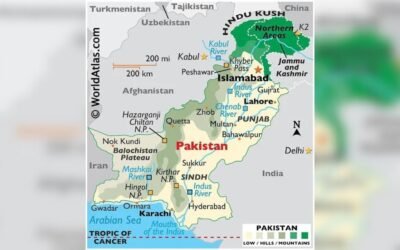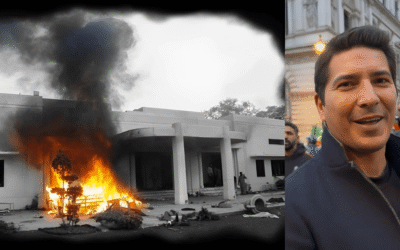Public trust in democratic institutions is fragile in many parts of the world. Pakistan is no exception. Low voter turnout, widespread misinformation, and limited citizen engagement have all raised concerns about the health of democracy. Yet efforts are underway to bridge the gap between citizens and their representatives. A key part of this effort lies in the use of digital tools to promote transparency, accountability, and civic participation.
In January 2025, the Pakistan Institute for Parliamentary Services (PIPS) organized a Digital Democracy Workshop at the Provincial Assembly of Sindh. The event was designed to train parliamentary officers in using modern technology to address the challenges of the digital age. More than two dozen officers, from grades 17 to 20, took part in the session.
The program was conducted in collaboration with the United Nations Development Programme (UNDP). It was led by Mr. Fayaz Thaheem, Deputy Director of PIPS, and Mr. Usman Zafar, a Safe Digital Environment Specialist from UNDP. The agenda was straightforward but ambitious: improve digital literacy, strengthen fact-checking skills, and train officials in using social media analytics for better public engagement.
Table: Challenges vs. Reform Tools
| Challenge | Reform Tool / Response |
|---|---|
| Low trust in parliament (39%) | Transparency dashboards, live-streamed debates |
| Misinformation and disinformation | Training in fact-checking, UNDP digital literacy workshops |
| Deepfakes and AI propaganda | Awareness campaigns, cross-check protocols |
| Weak citizen engagement | CiviMP platform for direct interaction with lawmakers |
| Limited staff capacity | Continuous training for parliamentary officers |
| Digital divide across provinces | Expanding civic tech access and online participation platforms |
Tackling the Digital Divide
Parliamentarians are now expected to communicate not only in the assembly but also on social platforms. Citizens demand real-time information and instant accountability. But the digital landscape comes with risks. A 2023 study by the Digital Rights Foundation found that 67 percent of internet users in Pakistan encountered misinformation at least once a week. Much of it spreads on platforms like Facebook, WhatsApp, and X (formerly Twitter).
Celebrating Pakistan’s Independence Day and its continuous digital progress.
As a DCO Member State, Pakistan is driving innovation, transforming into a vibrant digital hub. With digitally skilled graduates entering the workforce each year, and global collaborations supporting… pic.twitter.com/UzeYhDcs0a
— Digital Cooperation Organization (@dcorg) August 14, 2025
The workshop addressed these challenges directly. Officers practiced methods of spotting misinformation and learned how to distinguish between misinformation, disinformation, and malinformation. Mr. Zafar explained:
- Misinformation is false information spread without intent to harm.
- Disinformation is deliberate, false, and designed to mislead.
- Malinformation involves using real information to damage reputations or fuel divisions.
“These distinctions matter,” Zafar told participants. “If we cannot tell them apart, we cannot respond effectively.”
The session also included warnings about deepfakes. Videos generated with artificial intelligence have already been used in South Asia to spread propaganda. According to research published by EU DisinfoLab in 2024, doctored videos and AI-manipulated voices were used in over a dozen cases to influence public opinion across the region.
From Print to Digital
The workshop compared how information flows through different media. Print journalism can take up to 20 hours from reporting to publication, ensuring time for verification. Television channels often break a story within two hours, followed by live updates and expert analysis. Social media, by contrast, can spread information in as little as five minutes with little guarantee of accuracy.
“The speed of online media is both its strength and its greatest danger,” Zafar noted. He urged officers to adopt fact-checking habits before amplifying content on their official platforms.
Khyber Pakhtunkhwa leads the Digital Transformation & Governance by becoming the 1st Province in Pakistan, whose Cabinet is completely digital now.
In a landmark step 1st Digital Cabinet was held today, all summaries, presentation made digitally available on dashboards.
Next step… pic.twitter.com/KjwvEZnhBA— Faisal Amin Khan (@FaisalAminKhan) August 12, 2025
Building a Transparent Parliament
Digital democracy is not just about fighting falsehoods. It also means building direct links with citizens. Officers were trained to use social media analytics to measure public sentiment and identify emerging issues. By tracking hashtags and engagement levels, parliaments can better respond to public concerns.
Access to parliamentary data is another key reform. Citizens can now track attendance, voting patterns, and committee proceedings in several provincial assemblies. In 2024, PIPS worked with civic tech groups to expand CiviMP, a tool that allows legislators to manage constituent requests and maintain records of their outreach.
Transparency initiatives are not new to Pakistan. Parliamentary Monitoring Organizations (PMOs), such as the Free and Fair Election Network (FAFEN), have long tracked the performance of assemblies. But the recent use of digital dashboards and live-streaming has expanded public access. According to FAFEN, live coverage of parliamentary debates in 2024 attracted nearly three million online viewers, far exceeding the physical capacity of assembly galleries.
The Challenge of Trust
Trust in democratic institutions remains low. A Gallup Pakistan poll in late 2023 showed that only 39 percent of respondents trusted the national parliament. Corruption scandals, political instability, and opaque decision-making were the top reasons cited. Digital democracy cannot solve these problems on its own, but it can reduce the distance between lawmakers and citizens.
Training sessions like those run by PIPS are part of a broader trend. In recent years, provincial assemblies in Khyber Pakhtunkhwa and Sindh have hosted similar events, focusing on both elected members and their staff. Participants often highlight the need for continuous training. As one officer remarked during the Sindh session: “One workshop is not enough. We need regular updates if we are to stay ahead of misinformation.”
Learning from Global Examples
Pakistan is not alone in this journey. Other countries have invested heavily in digital democracy. Estonia, for example, allows citizens to vote online in national elections, a system used by more than 50 percent of voters in its 2023 parliamentary polls. In India, the Election Commission has experimented with blockchain-based voting systems to make remote voting more secure.
But these examples also show the risks. The United States’ 2016 presidential election and the Brexit referendum in the United Kingdom demonstrated how digital platforms can be manipulated to sway public opinion. Both cases raised concerns about micro-targeted political advertising and the misuse of personal data.
For Pakistan, the key will be balance. Technology offers tools to expand access, but it also opens new vulnerabilities. Ensuring data privacy, bridging the digital divide, and protecting against manipulation will require a mix of legislation and digital literacy.
Workshops like those held by PIPS and UNDP are a start. They demonstrate that democratic institutions can adapt to new realities. But long-term trust will only come if citizens see tangible results—faster responses to grievances, more transparent decision-making, and active efforts to fight falsehoods online.
As Mr. Zafar put it during the Sindh workshop: “Technology can strengthen democracy only if people use it responsibly. The goal is not just to be online, but to be trusted.”
You May Like To Read:







